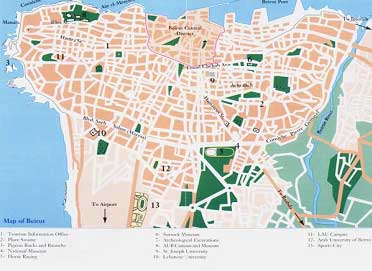
Conference Venue

History
 Beirut,which was voted the Nr.1 destination for 2009 by the NY Times, is the capital and largest city of Lebanon with a population of over 2.1 million as of 2007. Located on a peninsula at the midpoint of Lebanon's coastline with the Mediterranean sea, it serves as the country's largest and main seaport and also forms the Beirut District area, which consists of the city and its suburbs. The first mention of this metropolis is found in the ancient Egyptian Tell el Amarna letters, dating to the 15th century BC, and the city has been continuously inhabited over the centuries since.
Beirut,which was voted the Nr.1 destination for 2009 by the NY Times, is the capital and largest city of Lebanon with a population of over 2.1 million as of 2007. Located on a peninsula at the midpoint of Lebanon's coastline with the Mediterranean sea, it serves as the country's largest and main seaport and also forms the Beirut District area, which consists of the city and its suburbs. The first mention of this metropolis is found in the ancient Egyptian Tell el Amarna letters, dating to the 15th century BC, and the city has been continuously inhabited over the centuries since.
|
Beirut holds Lebanon's seat of government and plays a central role in the Lebanese economy with its Downtown, Hamra, Verdun, and Ashrafieh based corporate firms and banks. The city is also the focal point of the region's cultural life, renowned for its press, theaters and cultural activities. After the destructive Lebanese civil war, Beirut underwent major reconstruction, and the redesigned historic city center, marina, pubs and nightlife districts have once again rendered it a popular tourist attraction. Beirut was listed as one of the top ten liveliest cities in the world by the lonely planet list of the top ten cities for 2009. |
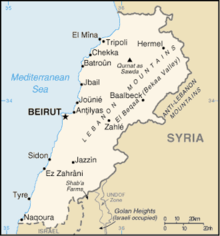
|
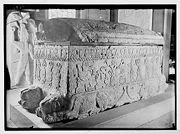
|
Originally named "The Wells" by the Phoenicians, Beirut's history goes back more than 5000 years. Excavations in the downtown area have unearthed layers of Phoenician, Hellenistic, Roman, Arab and Ottoman remains. The first historical reference to Beirut dates from the 14th century BC, when it is mentioned in the cuneiform tablets of the "Amarna letters." Ammunira of Biruta (Beirut) sent 3 letters to the pharaoh of Egypt. Biruta is also referenced in the letters from Rib-Hadda of Byblos. The most ancient settlement was on an island in the river that progressively silted up. The city was known in antiquity as Berytus (see also List of traditional Greek place names); this name was taken in 1934 for the archaeological journal published by the Faculty of Arts and Sciences at the American University of Beirut. |
|
In 140 BC, the city was taken and destroyed by Diodotus Tryphon in his contest with Antiochus VII Sidetes for the throne of the Seleucid monarchy. Beirut was soon rebuilt on a more regularized Hellenistic plan, renamed Laodicea in Phoenicia or Laodicea in Canaan, in honor of a Seleucid Laodice. The modern city overlies the ancient one and little archaeology had been accomplished until after the end of the civil war in 1991; now large sites in the devastated city center have been opened to archaeological exploration. A dig in 1994 established that one of Beirut's modern streets, Souk Tawile, still follows the lines of an ancient Hellenistic/Roman one. |
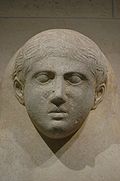
|
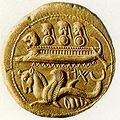
|
Mid-first century coins of Berytus bear the head of Tyche, goddess of fortune; on the reverse, the city's symbol appears: a dolphin entwines an anchor. This symbol was taken up by the early printer Aldus Manutius in 15th century Venice. Beirut was conquered by Agrippa in 64 BC and the city was renamed in honor of the emperor's daughter, Julia; its full name became Colonia Julia Augusta Felix Berytus. The veterans of two Roman legions were established in the city: the fifth Macedonian and the third Gallic. The city quickly became Romanized. Large public buildings and monuments were erected and Berytus enjoyed full status as a part of the empire. |
|
Under the Romans, it was enriched by the dynasty of Herod the Great, and was made a colonia, Colonia Iulia Augusta Felix Berytus, in 14 BC. Beirut's school of law was widely known at the time. Two of Rome's most famous jurists, Papinian and Ulpian, both natives of Phoenicia, taught at the law school under the Severan emperors. When Justinian assembled his Pandects in the 6th century, a large part of the corpus of laws were derived from these two jurists, and Justinian recognized the school as one of the three official law schools of the empire (533). Within a few years, as the result of a disastrous earthquake (551), the students were transferred to Sidon. About 30,000 were killed in Berytus alone and, along the Phoenician coast, total casualties were close to 250,000. |
|
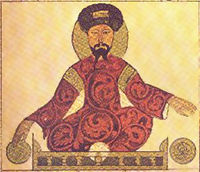
|
Beirut passed to the Arabs in 635. As a trading centre of the eastern Mediterranean, Beirut was overshadowed by Akka during the Middle Ages. From 1110 to 1291 it was in the hands of the Crusader Kingdom of Jerusalem. John of Ibelin, the Old Lord of Beirut (1179/1236) rebuilt the city after the battles with Saladin, and also built the Ibelin family palace in Beirut. No matter who was its nominal overlord, whether Turk or Mamluk, Beirut was ruled locally by Druze emirs. One of these, Fakr ed-Din Maan II, fortified it early in the 17th century, but the Ottomans retook it in 1763 and thenceforth, with the help of Damascus, Beirut successfully broke Akka's monopoly on Syrian maritime trade and for a few years supplanted it as the main trading centre in the region. During the succeeding epoch of rebellion against Ottoman hegemony at Akka under Jezzar and Abdullah pashas, Beirut declined to a small town (population about 10,000), and was fought over among the Druze, the Turks and the pashas. After Ibrahim Pasha captured Akka in 1832, Beirut began its early modern revival. |
|
In 1888, Beirut was made capital of a vilayet in Syria, including the sanjaks Latakia, Tripoli, Beirut, Akka and Bekaa. Beirut became a very cosmopolitan city and had close links with Europe and the United States. Beirut became a centre of missionary activity that build an impressive education system. This included the Syrian Protestant College, which was established by American missionaries and eventually became the American University of Beirut (AUB). Beirut became the centre of Arab intellectual activity in the 19th century. Provided with water from a British company and gas from a French one, the city thrived on exporting silk grown on nearby Mount Lebanon. After French engineers established a modern harbor (1894) and a rail link across Lebanon to Damascus, and then to Aleppo (1907), much of the trade was carried by French ships to Marseille, and soon French influence in the area exceeded that of any other European power. In 1911, the population mix was reported in the Encyclopædia Britannica as Muslims, 36,000; Christians, 77,000; Jews, 2500; Druze, 400; foreigners, 4100.
|
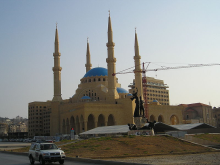
|
After the collapse of the Ottoman Empire following World War I, Beirut, along with all of Lebanon was placed under the French Mandate. Lebanon achieved independence in 1943, and Beirut became its capital city. Beirut remained an intellectual capital of the Arab world and a major commercial and tourist center until 1975 when a violent civil war broke out in Lebanon. During most of the war, the city was divided between the largely Muslim west part and the Christian east. The central area of the city, previously the focus of much of the commercial and cultural activities, became a no man's land. Many of the city's inhabitants fled to other countries. In 1983, French and US barracks were bombed. |
|
Since the end of the war in 1990, the people of Lebanon have been rebuilding Beirut, and the city has somewhat regained its status as a tourist, cultural, and intellectual center in the Middle East, as well as a center for commerce, fashion, and media. |
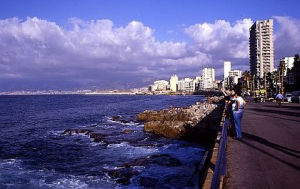
|
Some more views of Beirut
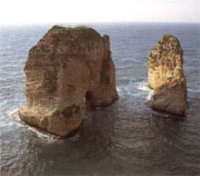
|
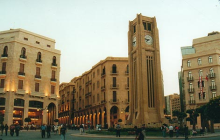
|
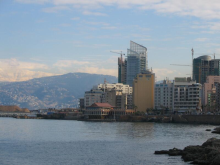
|
Places of interest in and around Beirut

|
The AUB Archeological Museum in Beirut has an extensive collection of artifacts from Lebanon and the Near East.
As we will be visiting Byblos on the 3rd day of the conference, you will find more information on the social page. |
Parts of this text were copied from 
Conference Location
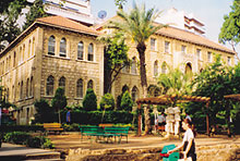
|
The 2009 MESM conference will be held at the Lebanese American University of Beirut. The Beirut campus is nestled in an urban setting, just steps away from the stimulating cultural, social, educational and recreational opportunities of Lebanon's capital. The campus is the university's foundation site as a women's college in the early 20th century. Its first building was Sage Hall, erected in 1933. Through the decades, nine other buildings were added over the central campus area that is beautifully landscaped with Mediterranean trees and foliage. The latest addition, which has significantly enlarged the campus expanse to 24,525 square meters, is an impressive complex housing the School of Business and the Riyad Nassar Library. The conference itself will be held at Irwin Hall, ABC Conference Room. On the 3rd day of the conference in Byblos we will be in building Science 607. |
Getting to Beirut and the LAU Campus
By Plane |
The Beirut International Airport at Khaldeh (8 km from Beirut), is used by many international airlines plus the national carrier, Middle East Airlines (MEA). (Other MEA website) Taxis are plentiful at the airport, and comfortable taxis that are authorized by the airport are parked next to the terminal in the arrivals level and have an airport logo on the side. These taxis are regulated by the airport authorities and offer the exact tariffs for travel to and from the airport. At the airport you can of course also hire a car. |
By Train |
Despite its rich history, the consecutive wars suspended the railway system. |
By Bus and Taxi |
Taxis can be found everywhere in town, just make sure you take the white official taxis. Bus travel is also available but is less recommended then taxi travel. You can find information on the different Bus routes and Bus Stations here. To travel about you can also hire a taxi. |
By Car |
Cars can be rented at the airport see above. |
On Foot
|
The Beirut campus is in the Koraytem district, four blocks south of Hamra Street. If you’re walking down Hamra street in the direction of traffic, you can turn left one block after the Crowne Plaza Hotel; keep going straight (uphill) until you reach LAU’s lower gate. Another way to reach LAU is via Koraytem’s main road. For example, if you’re coming by car from the coastal boulevard, you can turn inland atKFC, near the Pigeon Rock (Raouche). Drive uphill on that winding road, past the Safir Heliopolitan hotel and Future TV and you’ll reach the main Koraytem artery. Turn left and keep going until you reach the intersection. From there you can walk to the lower gate, about 50 meters against traffic direction. (The intersection is also reachable from Sadat street, which runs north-south starting on Bliss street, and cuts Hamra street at its end.) The upper gate is on a narrow street that is easily accessible to pedestrians from Madame Curie Street. For security reasons a section of the latter is blocked out, but LAU is still accessible from it. To get on Madame Curie Street, turn right on the main Koraytem road just before the Saudi embassy. Then turn left and follow the road; it’s a winding slope that takes you to the School of Business/Library gate; you can keep going to reach the lower gate. Note: all the landmarks and streets mentioned here appear on our annotated http://www.lau.edu.lb/about/campuses/beirut/google_map.php
As of 8 a.m., traffic is usually heavy in the area. You could spend about 30 minutes within Koraytem or Hamra to reach the university, or a parking spot. |
Useful Maps
Visitor's Survival Guide

|
Passports and Visas Visitors to Lebanon must have a valid passport and a Lebanese visa. Visas are delivered by Lebanese diplomatic missions abroad. Tourists from the US and many Arab and European countries can obtain visas at the airport or any Lebanese border upon arrival. Currency Movement of currency into and out of the country and all exchange transactions are completely free of any kind of control. Gold and silver coins may be freely exchanged,imported and exported. The monetary unit is the Lebanese pound. (www.xe.com) Customs Examination of travelers' luggage is carried out rapidly and courteously. All ordinary personal effects are exempt from customs duty. On Taxis Bus Travel Electric Current: 110 or 220 volts, 50 cycles. It's best to check. Language In addition to his native Arabic language, the average Lebanese is often fluent in English or French. Many well-educated Lebanese are tri-lingual. |


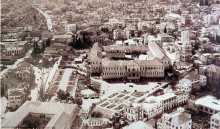
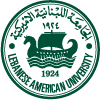
 Tel:+961 9 547256 x2332
Tel:+961 9 547256 x2332 Fax:+961 9 547256
Fax:+961 9 547256 Email:
Email: 







